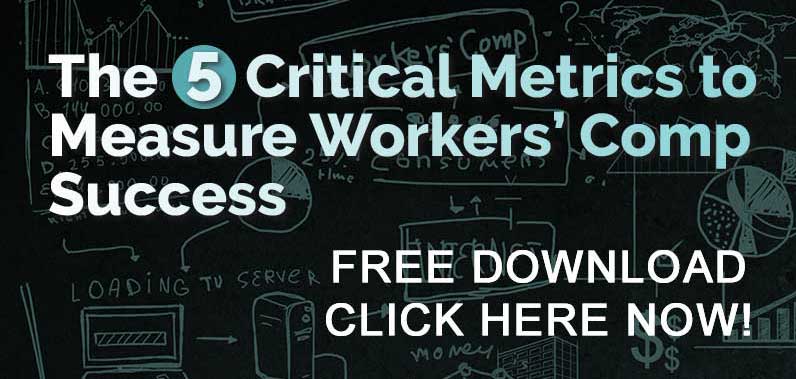The New Year provides employers an opportunity to re-examine the issue of ergonomics in the workplace. Making sure that workplace ergonomics is in place for all employees not only improves workplace morale but can reduce the costs of workers’ compensation claims in the future.
What is Ergonomics?
Defined by Webster, ergonomics is the “the study of people’s efficiency in their working environment.” This study includes a review of workstations and job functions to reduce muscle overuse, correct poor posture and eliminate injuries cause is repetitive work activities. It can also include a review of policies and procedures that seek input from a varied of interested stakeholders—include the person perform a particular work function. It is important to include a review of tools used on a daily basis and other intangibles including, but not limited to workspace lighting.
Click Link to Access Free PDF Download
Implementing an Effective Review
A proper ergonomics review includes the use of different specialists and stakeholders. Beyond using a qualified specialist, it is important to include input from company management and employees performing job functions. This review can also include a review of available resources and budget constraints.
It is also essential to understand the demographics of your labor force. Studies show that Americans are working into their later years. This is resulting in more severe injuries from repetitive type injuries that lead to longer periods of disability. Factors to consider when addressing this issue include:
- Age discrimination laws that prevent employers from engaging in unlawful labor practices;
- State and federal OSHA laws and regulations; and
- Addressing injury and post-injury response.
Return-To-Work and Ergonomics
A successful ergonomics review will keep in mind issues employer, and employees face when returning to work following an injury. Some important matters to consider include:
- Modification of a pre-injury position to accommodate the restrictions of a recovering employee;
- The ability of an employee under work restrictions to rotate positions on a frequent basis; and
- Workstations that are easily modified to allow employees to move from one function to the next without disruptions in productivity.
FREE DOWNLOAD: “5 Critical Metrics To Measure Workers’ Comp Success”
These tasks are sometimes difficult to achieve. Barriers to successful implementation include the inability of the claims management team to coordinate with employer representatives. There is a need for all stakeholders to cooperate on these matters. It requires clear communication and objective information from the treating physicians.
Injury Prevention
The prevention of injuries is a major feature of a successful ergonomics program that sometimes goes unnoticed. Examples of this include adjustable workstations for employees that allow them to perform functions sitting and standing. This not only leads to increased job satisfaction but is proven to reduce injury. Some common injuries prevented from this type of modification include cervical spine strain, low back discomfort and upper extremity injuries such as carpal tunnel syndrome or ulnar nerve impingement.
Conclusions
An ergonomics review has many important benefits to all stakeholders concerned about workers’ compensation claim prevention or reduction. This all starts with an effective implementation program. Once this takes place, it is important to include all parties, including employees.

Author Michael Stack, CEO Amaxx LLC. He is an expert in workers’ compensation cost containment systems and helps employers reduce their workers’ comp costs by 20% to 50%. He works as a consultant to large and mid-market clients, is a co-author of Your Ultimate Guide To Mastering Workers Comp Costs, a comprehensive step-by-step manual of cost containment strategies based on hands-on field experience, and is founder & lead trainer of Amaxx Workers’ Comp Training Center .
Contact: mstack@reduceyourworkerscomp.com.
Workers’ Comp Roundup Blog: https://blog.reduceyourworkerscomp.com/
©2018 Amaxx LLC. All rights reserved under International Copyright Law.
Do not use this information without independent verification. All state laws vary. You should consult with your insurance broker, attorney, or qualified professional.
FREE DOWNLOAD: “5 Critical Metrics To Measure Workers’ Comp Success”









